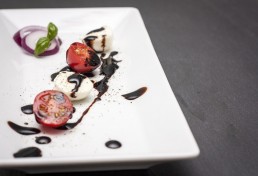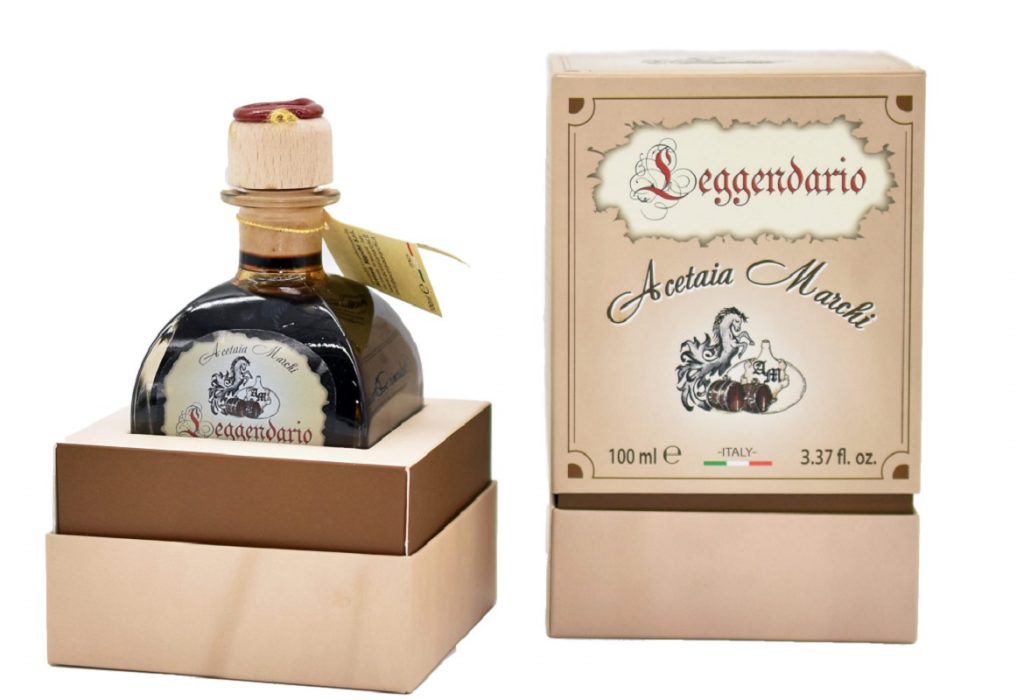Balsamic vinegar: a bit of history... and a guided tour of the vinegar cellar afterwards!
The history of balsamic vinegar is deeply linked to the Modena area and has its roots in a centuries-old tradition. The latter, in 2000, led the traditional product to obtain Protected Designation of Origin (PDO) status. In 2009, it allowed the condiment made by adding wine vinegar to cooked must to be included by the European Commission in the register of I.G.P. (Protected Geographical Indication) products. Let's take a look at the main stages of balsamic vinegar, from the past to the present, and how to learn more about them on a guided tour through the vinegar cellar.
The Traces in Ancient Rome
We all know that balsamic vinegar is of Italian origin, but few of us know that the history of this condiment has very ancient origins. We find, in fact, some traces of its production and use as far back as the Middle Eastern civilisations of the 3rd millennium BC and, above all, during the period of the Ancient Romans. It was here that the cooking of grape must was born, typical of the balsamic vinegar production process that can be observed during a guided tour of the vinegar cellar.
Initially, however, must was not used as a condiment. We find evidence of such use in the first book of Virgil's Georgics.
More specifically, it tells of a woman from the Emilian area who used to cook must to put it in barrels and consume it later.
At the court of the Estensi
Over the centuries, the ancestor of balsamic has undergone numerous changes. However, the first concrete evidence of a condiment from the Modena area, similar to balsamic vinegar, dates back to the transfer of the Este family from Ferrara to Modena. In the registers of the Este secret cellars, relating to the year 1747, there is mention of this interesting food and wine product.
The Napoleonic Invasion and the Balsamic Vinegar Trade
.
Until 1796, the year of the Napoleonic invasion, balsamic vinegar was a condiment found only on the tables of the Este dukes. After Napoleon's arrival in Italy, this product began to be known and sold even outside the Duchy of Modena. Producers began to present it at numerous international exhibitions, meeting with great success.
It is also possible to date back to the 19th century the establishment of the first dynasties of producers of balsamic black gold, who are still part of the Consorzio di Tutela today.
Balsamic Vinegar Today
In 1933, balsamic vinegar was officially recognised by the Minister of Agriculture Giacomo Acerbo. It was in 1965, however, that the Official Gazette published the first specification on the ‘Characteristics of composition and method of preparation of Balsamic Vinegar of Modena’. Over time, this condiment has become increasingly popular. It has gained greater appreciation year after year.
Balsamic Vinegar of Modena from Acetaia Marchi and the guided tour of the vinegar cellar
.As we said at the beginning, from the diffusion and appreciation obtained over time, balsamic vinegar has come to obtain some very important recognitions. We at Acetaia Marchi are proud of this and that is why we produce our vinegar by valuing tradition and using top quality grapes. We do not use preservatives or other substances that can alter the authenticity of the dressing.
We only offer products that guarantee a unique and unforgettable culinary experience.
Bring the taste of tradition to the table with Balsamic VinegarTraditional Balsamic Vinegar of Modena D.O.P. and the Balsamic Vinegar of Modena I.G.P. from Acetaia Marchi. Then, do not hesitate to book a guided tour of the acetaia, during which you will discover how this delicious and precious condiment is produced. You certainly won't regret it!
The characteristics of Organic Balsamic Vinegar of Modena PGI
It is a prized Italian product and now together we will discover its history, production and uses in the kitchen of the famous Modenese balsamic vinegar.
For the uninitiated, it is characterised by its dark/brownish colour, good density, and pleasantly sour and well-balanced taste, with hints that change depending on the type of wood in which the vinegar is aged.
The history of Balsamic Vinegar
The name of balsamic vinegar is inextricably linked to its territory, which has been inhabited since ancient times: as early as the 3rd century BC. The ancient inhabitants of the Modena area had to find ways to contribute to the production of wine, and came up with the idea of boiling the must to avoid fermentation and vinification.
In the mid-18th century, the term balsamic appeared for the first time in the records of the cantina degli Estensi. The adjective was clearly linked to the product's special curative properties, used against plague sores or to combat migraines. Over the course of the centuries, balsamic vinegar has been increasingly appreciated in the national and international food and wine scene, until it was awarded PDO recognition by the European Community in 2000.
Balsamic vinegar PGI: characteristics and production
In 2009, Modena Balsamic Vinegar was awarded the PGI (Protected Geographical Indication) designation by the European authorities. It is a food and wine product of great excellence, appreciated throughout the world, whose production is strictly protected by specifications jealously guarded by the Consortium of Balsamic Vinegar of Modena. Here are all the steps involved in its production:
- Pressing of the grapes from the vineyards of the provinces of Modena and Reggio Emilia (Albana, Lambrusco, Sangiovese and Trebbiano), followed by the production of must and its partial fermentation, cooking or concentration.
- To give the vinegar its organoleptic characteristics, a dose of vinegar at least 10 years old and one dose of wine vinegar (at least 10% of the total product) is added to the must.
- Aging in wooden barrels for a period of at least 60 days, at the end of which the product is examined to see if it really has all the necessary characteristics to be defined as a Balsamic Vinegar of Modena PGI..
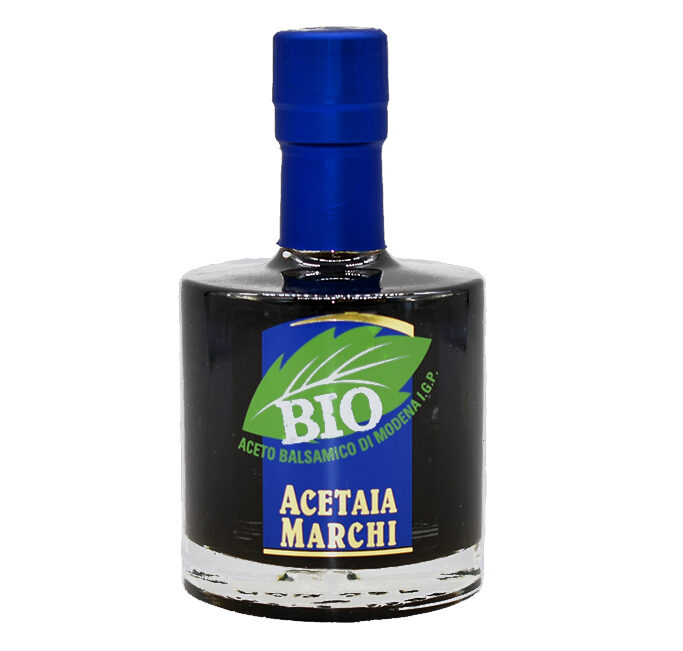
The Aceto Balsamico di Modena I.G.P. Biologico Platino boasts a very harmonious, smooth and acetic flavour and has a brilliant deep black colour. With its intense aroma and fresh fruity flavours, it is ideal for those who like to enhance and flavour every dish with an excellent, high-quality Balsamic Vinegar of Modena Organic I.G.P..
From the union of the best Must and Wine Vinegar, obtained exclusively from grapes grown on the family's land using the Organic method, comes a special Organic Balsamic Vinegar of Modena I.G.P. characterised by a very high density. This product is designed purely for an increasingly large and demanding organic clientele.
Let's see what its ingredients are:
- Cooked grape must, wine vinegar. It is a 100% organic product. It contains no preservatives, dyes, thickeners, antioxidants, sweeteners or added sulphites.
- Acidity: > 6%.
- Density: approx. 1.34
Is it better to use a balsamic dressing or Balsamic Vinegar of Modena PGI? Cooking tips
Balsamic vinegar is increasingly finding its way onto our kitchen shelves. It is a delicious and versatile condiment, suitable for most of our savoury dishes and even some sweet recipes. It allows us to complement dishes of all kinds, from the simplest and freshest to the tastiest and most elaborate.
The sweet-and-sour flavour of Balsamic Vinegar goes very well with many foods: just a few drops are enough to satisfy even the most discerning palates! In addition to vinegar, however, balsamic condiments are also often used in cooking. There are differences between the two products which you should be aware of if you want to use them correctly on your table. Let's take a look at what differentiates these two products and how to use them in the kitchen.
The differences between Balsamic Vinegar of Modena igp and Balsamic Vinegar Condiment
It is not easy to notice the differences between vinegar and condiment. Yet the two products have some substantial differences. The most obvious one is certainly acidity. Balsamic Condiments are brown in colour like vinegar and have a very full-bodied consistency. In terms of taste, the sweet component tends to prevail over the sour component in balsamic seasonings. They are designed for those who like 'sweeter' and less vinegary flavours, with a lower acidity level of 5-4.5 %. Because of this low level of acidity, they could not by law be called 'Aceto Balsamico Tradizionale di Modena D.O.P.' or 'Aceto Balsamico di Modena IGP', which have an acidity of at least 6 %. Moreover, current legislation allows them to be bottled in bottles of different capacities, such as 40, 50, 100 or 200 ml.
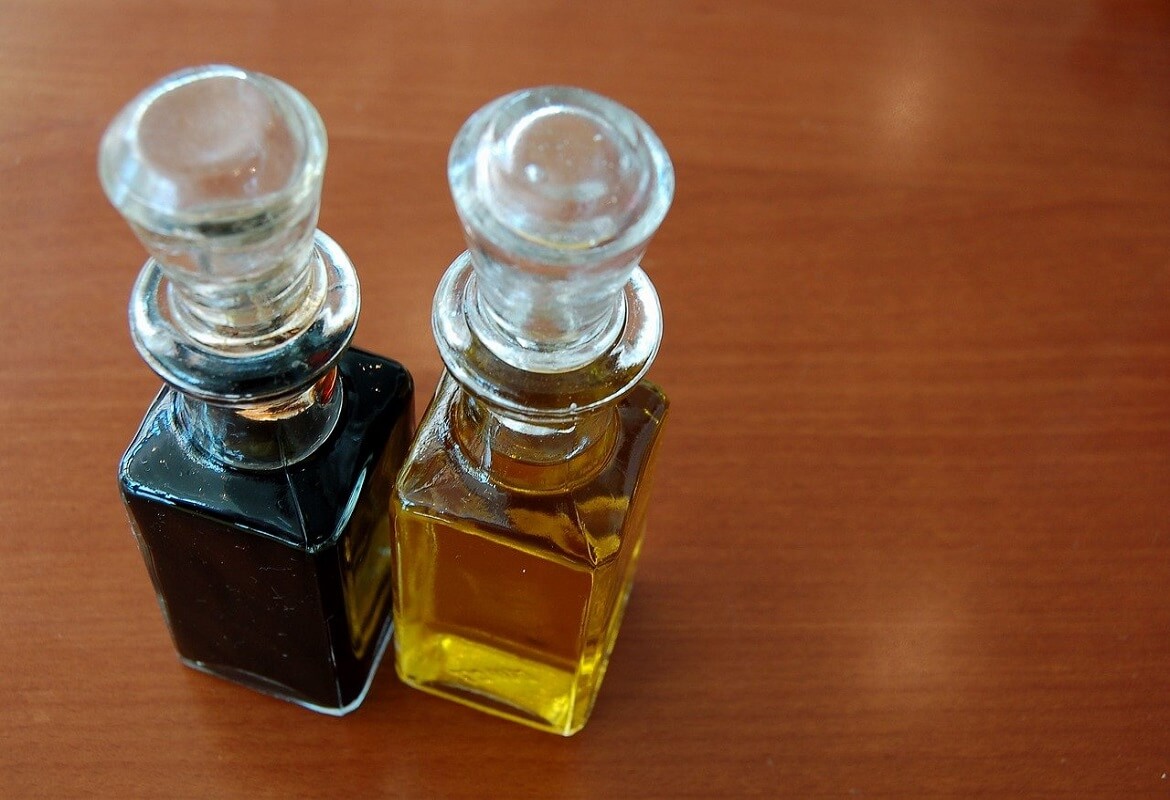
When to use vinegar and when is it a good idea to use balsamic dressing?
Balsamic vinegar can be used as a condiment for practically any dish. Its sweet-and-sour flavour goes very well with many types of food, such as meat, tasty salads, risotto or fruit. Balsamic seasoning can also be used to season the same dishes. However, you must always remember that its taste is somewhat sweeter and that the consistency is thicker. Therefore, it all depends on your taste and that of your diners.
Balsamic seasoning is the ideal ally for those who like to decorate dishes and add a touch of elegance and flavour to their preparations. In addition, due to its predominantly sweetish flavour, it is most often used for fruit salads, ice cream and desserts. So try it in sweet recipes and to refine your dishes - you won't be disappointed!
Balsamic vinegar and balsamic condiments: where to find them?
If you would like to try some authentic and tasty products, take a look at our suggestions. In our vinegar factory we produce Traditional Balsamic Vinegar of Modena D.O.P., Balsamic Vinegar of Modena I.G.P. , Condimenti Balsamici, fruit sauces, jams and compotes. We produce everything according to tradition and also offer interesting variations. These include the organic balsamic (Bronzo and Platino) and the Condimento Biologico Bianco. That said, we invite you to give us a try: we are sure that our products will win you over from the first taste!
The recipe for celeriac, pecorino cheese and rocket tacos with balsamic vinegar
How many times have you had to organise a family lunch, dinner or party with friends and not known what dishes to prepare? Being together with loved ones is a chance to take our minds off the daily stress and surround ourselves with the love of our loved ones. However, choosing which dishes to bring to the table can make us panic and build up tension. In order to make room only for cheerfulness, today we propose the recipe for celeriac, pecorino and rocket tacos with Balsamic Vinegar.
This is a tasty dish that is easy to prepare and different from the ordinary. It doesn't take much time, just a little patience and a few delicious ingredients.
A small premise
Celeriac is a vegetable with a high water content. For this reason it has a diuretic and purifying effect on the body. It is also rich in minerals such as calcium, iron, magnesium and potassium and has very few calories. All these characteristics make it an ideal food for those who like to bring nutritious and genuine ingredients to the table.
The other main characters in the recipe for celeriac tacos with balsamic vinegar will give your dish that extra touch of flavour, perfect for impressing all your guests! Let's go and prepare this tasty dish.
Ingredients and preparation of the recipe for celeriac, pecorino cheese and rocket tacos with balsamic vinegar
To prepare tasty tacos for 4 people, you will need the following ingredients.
- One celeriac,
- 500 g milk,
- Traditional Balsamic Vinegar of Modena DOP,
- Arugola,
- Pepper,
- One lemon,
- Pecorino Romano D.O.P.,
- Extra virgin olive oil,
- Salt to taste
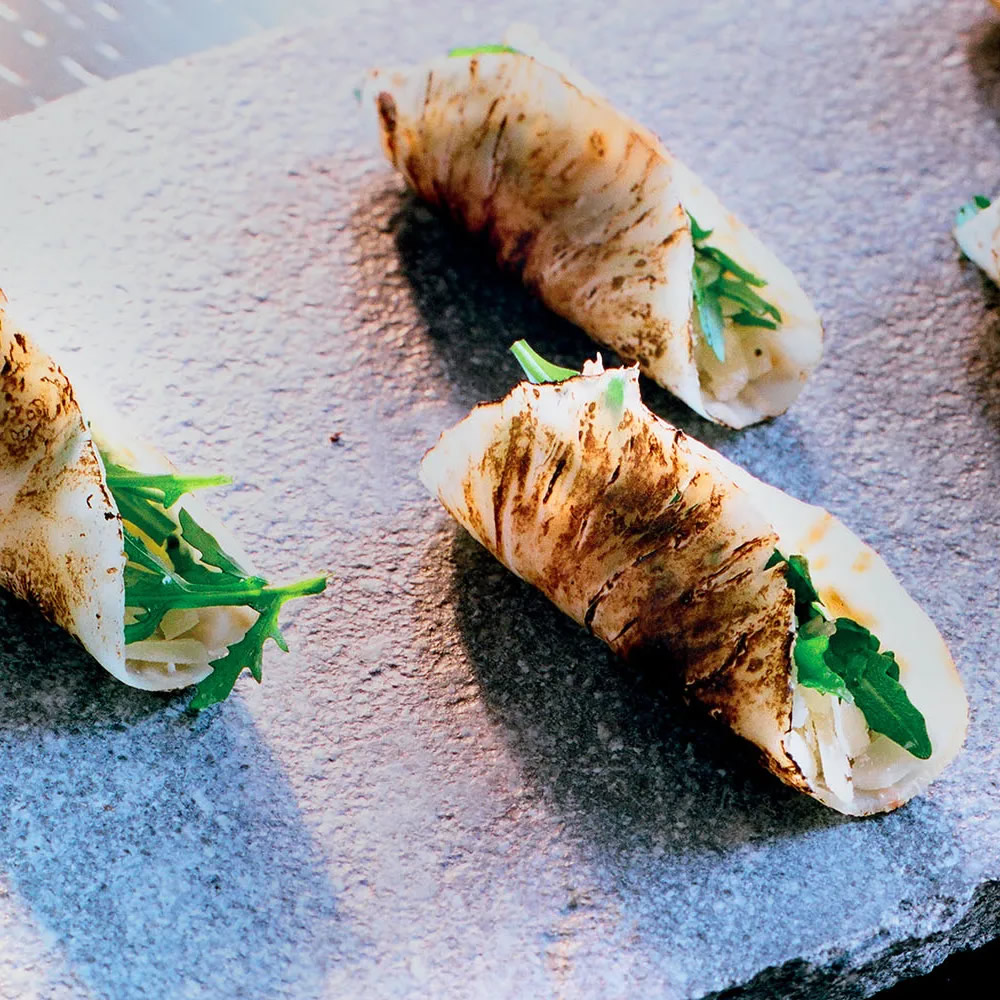
Preparation
To prepare the recipe for celeriac tacos with balsamic vinegar, start by cleaning the celeriac. Then season with extra virgin olive oil, pepper and a pinch of salt. Wrap your vegetable in aluminium foil and bake in the oven at 180°. When ready (when the core temperature reaches 84°C), take it out of the oven and leave it to cool. Then slice it into about 20 slices and cut the slices into perfect disks (we recommend using a small round pastry cutter).
Now toast the celeriac discs using a hot pan. Separately, heat the milk slightly, but do not let it come to the boil. Squeeze the lemon, add the juice to the milk and let the mixture thicken. Once this is done, to prepare the celeriac tacos recipe, strain the curds through a gauze and stir gently, adding salt and pepper.
Once this step is completed, season the rocket with a drizzle of extra virgin olive oil, Balsamic Vinegar, salt and pepper. On the cooled celeriac discs place a thin layer of curd, rocket and then a layer of grated pecorino cheese. At this point close your tacos.
The recipe for celeriac tacos with balsamic vinegar? Definitely worth a try!
This simple recipe will amaze and delight the palates of your guests. You will win everyone over with little effort and with a light and original dish. But remember to use only high-quality ingredients. For the celeria rapa tacos recipe, we recommend that you try one of our products. The I.G.P. Balsamic Vinegar of Modena. and the Condimenti Balsamici may also prove to be the ideal choice!
Balsamic vinegar with ice cream: delicious summer combinations
As we know, with the arrival of summer, the desire to cook decreases and with it, the desire to enjoy a good ice cream increases exponentially. Have you ever tried topping it with Balsamic Vinegar? If not, you should definitely not miss this article. Which ice cream flavours are best suited to this type of combination? Let's find out together.
How about a strawberry sundae with balsamic vinegar?
We can't start this list of combinations without mentioning the most famous par excellence: strawberries and Balsamic Vinegar. This nutritious and delicious red fruit appeals to young and old alike. Its accentuated sweetness is perfectly enveloped by the pungent taste of Balsamic Vinegar. The result? A whirlwind of flavours that you won't be able to live without.
In short, strawberries taste even better with balsamic vinegar and so does the frosted fruit. Our advice? Prepare a nice bowl of ice cream and top it with fresh strawberry pieces. Then add Balsamic Vinegar. You won't regret it!
Cream and Balsamic Vinegar: the perfect couple
If you are part of the gluttonous team, the cream ice cream is sure to be a favourite. A light drizzle of balsamic vinegar can give your sundae some oomph and personality, making it an experience you will definitely want to repeat. For a true masterpiece, complete the bowl with wild strawberries.

Kaiser Pears with Balsamic Vinegar
Keiser pears can be recognised by looking at the neck of the fruit, which has a long, slender stem. Their taste is very special: aromatic and sugary, they are particularly suitable for making ice cream. The best way to tone down the sweetness of this ice cream is to pair it with balsamic vinegar and finish the bowl with a handful of peeled almond flakes. It will win you over, just try it!
Balsamic vinegar: goodness always at hand
Balsamic vinegar is a world-famous Italian product that has become a real joker in the kitchen. With its unmistakable sweet and sour flavour, it is the perfect condiment for sweet and savoury recipes. The beauty of the culinary world is that there are no impassable limits, and the combination of balsamic vinegar with ice cream is clear proof of this. Always have the courage to experiment: hunger and curiosity will lead you to wonderful discoveries!
But don't forget to experiment by always using quality products. When it comes to Balsamic Vinegar, you can count on Acetaia Marchi. For more than a century we have been producing Traditional Balsamic Vinegar of Modena D.O.P. and Balsamic Vinegar of Modena I.G.P. Our vinegar works daily to offer so much taste and quality to every customer. Don't hesitate to discover all our products: from traditional balsamic vinegar to condiments, from sauces to jams. You can find them in the Products section, but you can also come and visit us. With Acetaia Marchi you can bring the taste of tradition to the table and make your ice cream even more delicious!
Cups with rocket salad, beetroot, walnuts, radishes and balsamic vinegar
In spring and especially in summer, we like to bring fresh, easy and quick recipes to the table. One of the recipes we recommend, which boasts precisely these characteristics, is the arugula salad, beetroot, walnuts, radishes and balsamic vinegar cup. If you have guests for lunch or dinner and want to make a good impression without having to spend a long time in front of the cooker, this is just the dish for you.
The characteristics of the main ingredients
Arugula salad, with all its ingredients, has interesting properties that are beneficial to our bodies. Rocket salad, in particular, offers a high proportion of fibre and calcium. Thanks to its properties, it can help detoxify the liver and also replenish the body's mineral salts lost through intense physical activity. It also has diuresis-promoting properties.
Radishes have a very high water content and also contain minerals such as iron, calcium and phosphorus; B vitamins, vitamin C and folic acid. Thanks to all these substances, these vegetables offer purifying and diuretic effects. In addition, their consumption promotes sleep.
The walnuts included in the rocket salad also have many beneficial properties. They provide a valuable supply of omega 3 fatty acids, which are very good for keeping cholesterol levels in the blood under control. Walnuts also contain a high amount of vitamin E, which is a powerful antioxidant, and arginine. Arginine is an amino acid which has the property of dilating blood vessels, oxygenating muscle tissue and thus improving physical performance. Red beets, on the other hand, contain folate, vitamin C and other minerals including potassium and iron. They are therefore a valuable aid for those suffering from anaemia or hypertension.
The ingredients to prepare this nutritious and tasty recipe
To prepare the salad bowls with rocket, beetroot, walnuts, radishes and balsamic vinegar, you will need the following ingredients.
For the cups
- 16 puff pastry discs,
- Extra virgin olive oil to taste,
- 1 yolk.
For the rocket salad
- 100 g rocket salad,
- 70 g beets,
- 50 g walnuts,
- 100 g radishes,
- Balsamic Vinegar of Modena I.G.P. to taste,
- Extra virgin olive oil, fine salt and pepper to taste.
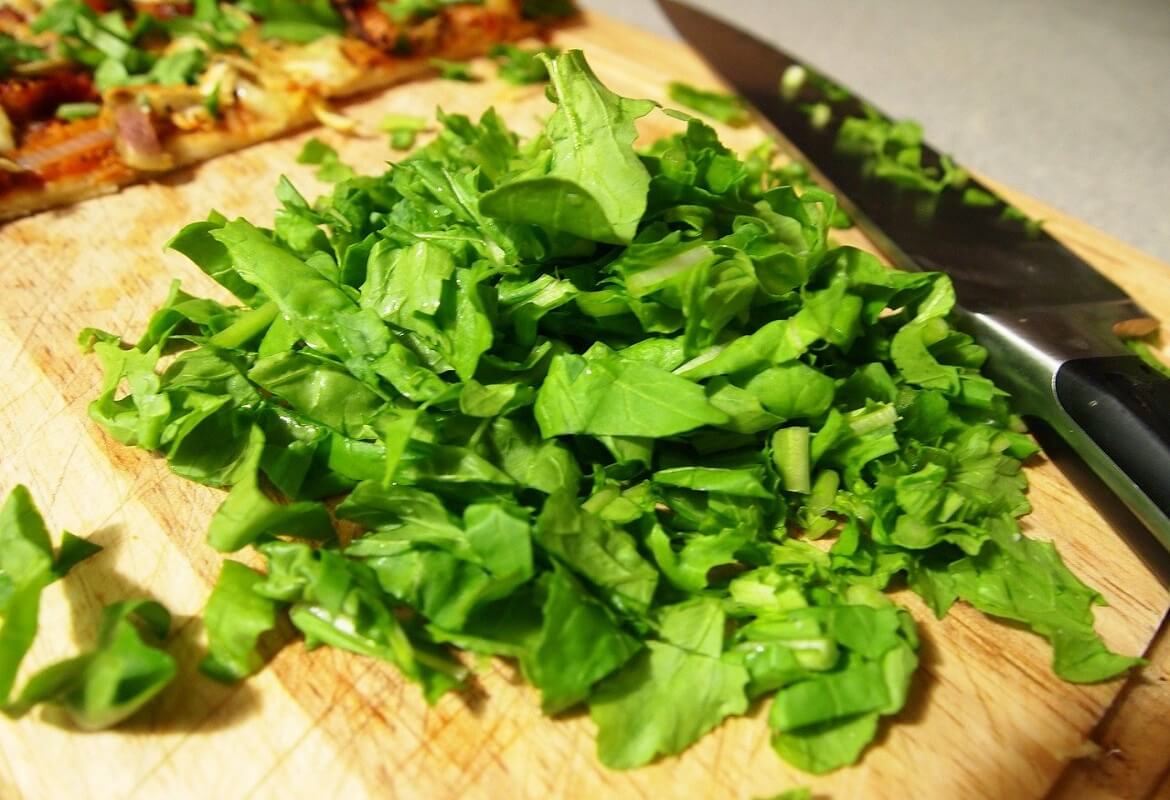
The preparation of bowls with rocket salad, beetroot, walnuts, radishes and balsamic vinegar
Take the discs of dough and place two of them, off-centre, in a ramekin. By doing this, you can form a cup. Using a kitchen brush, brush the entire surface with a little beaten egg yolk. Place the discs in the oven preheated to 200° and bake for about 15 minutes. After baking, leave the cups to cool and then prepare the rocket salad. Dice the cooked beetroot, crush the walnuts and finely chop the raw radishes (already cleaned under running water).
Next, place the beetroot in a bowl and add the rocket (already cleaned). Add the chopped nuts and the small radish slices. Finally, season with extra virgin olive oil, balsamic vinegar, salt and pepper. After carefully mixing the arugula salad to allow the dressing to be absorbed, place a portion in each bowl, using spoons. Plate and serve. To make a really delicious salad, we recommend you try our Gold Seal Balsamic Vinegar of Modena I.G.P..
The tasty crispy bacon with Balsamic Vinegar of Modena
If you want to prepare a tasty dinner to impress your friends or family, you've come to the right place. In fact, what we are proposing today is a preparation that is sure to leave all your guests speechless. This is the recipe for crispy bacon with balsamic vinegar from Modena.
This second course or starter is very tasty and delicious. The procedure is very simple and will allow you to prepare a dish suitable for the whole family... The crispy bacon will win everyone over and receive many compliments!
The main ingredients
To prepare this tasty recipe for crispy bacon with balsamic vinegar from Modena, you will need not only bacon and balsamic vinegar, but also red peppers. The red peppers make the dish more colourful and even more delicious and nutritious. Balsamic vinegar, however, gives the dish its unmistakable flavour. Balsamic vinegar is always the ingredient that enhances, envelops and makes every flavour even more excellent!
Ingredients for 4 people
- 500 g bacon,
- 3 red peppers,
- extra virgin olive oil,
- 2 teaspoons of Balsamic Vinegar of Modena I.G.P.,
- 1 or 2 litres of water,
- A sprig of rosemary,
- A clove of garlic,
- A bay leaf,
- Salt and pepper to taste
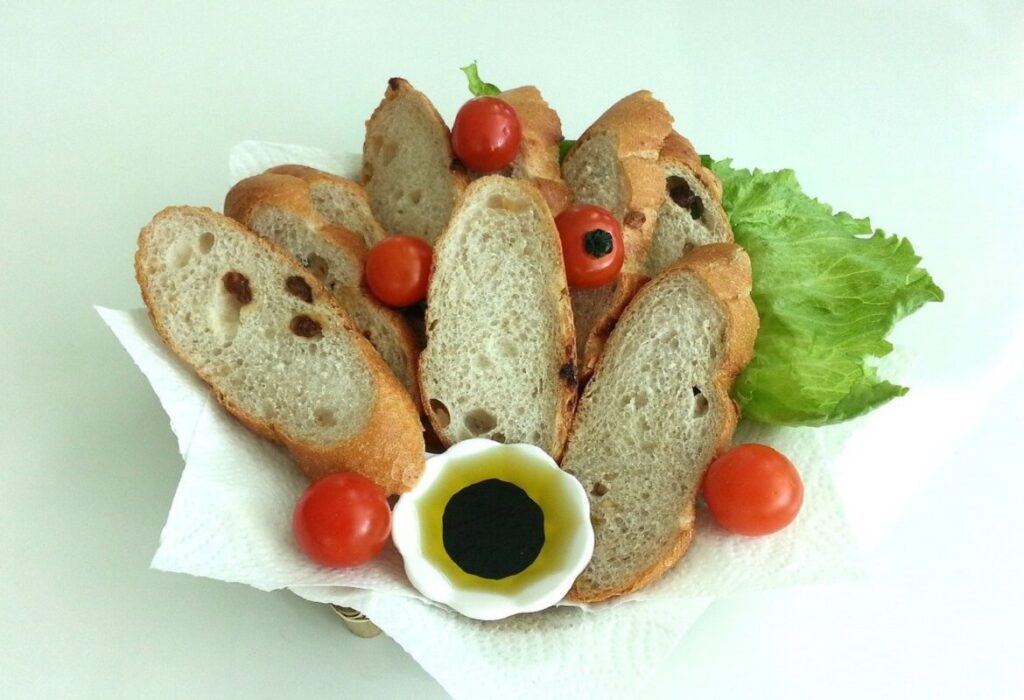
The preparation of crispy pancetta with Balsamic Vinegar of Modena
First take the bacon with the rind, then prepare the barbecue and brush the cooking grid. In this case, we recommend preferring indirect cooking : a method in which the food is placed away from the flame and the barbecue is covered with the appropriate lid.
To implement this cooking technique, light the fire only on the sides of the barbecue. Then prepare a pan with the garlic, rosemary, bay leaf and half a liter of water and place it on it. Spread the bacon on the top of the grill and lower the heat. After closing the lid, let the bacon cook for about a couple of hours.
The peppers, on the other hand, must be cooked directly: you can put them whole on the grill and check them often until the end of cooking. At this point you can compose the course of crispy pancetta with Balsamic Vinegar of Modena . To do this, you will have to cut the bacon into small pieces and turn it a little in the pan to make it crunchy. Then you can cut the peppers into pieces (slightly larger than the cubes of bacon), and then season them with oil, pepper and salt. Assort the dish with the two preparations and pour a little Balsamic Vinegar to enhance the taste.
At the table with crispy pancetta with balsamic vinegar of Modena
As you have noticed, with few ingredients and with little effort you will conquer the whole table and surely there will be someone who will want to steal the recipe! This dish will be a pleasant surprise for your guests: each course of crispy bacon with Balsamic Vinegar of Modena will offer an unforgettable taste. Try it with one of our products: you can find them here. Do not hesitate to contact us for advice on choosing the right balsamic vinegar!
The difference between Traditional Balsamic Vinegar of Modena PDO and Balsamic Vinegar of Modena PGI.
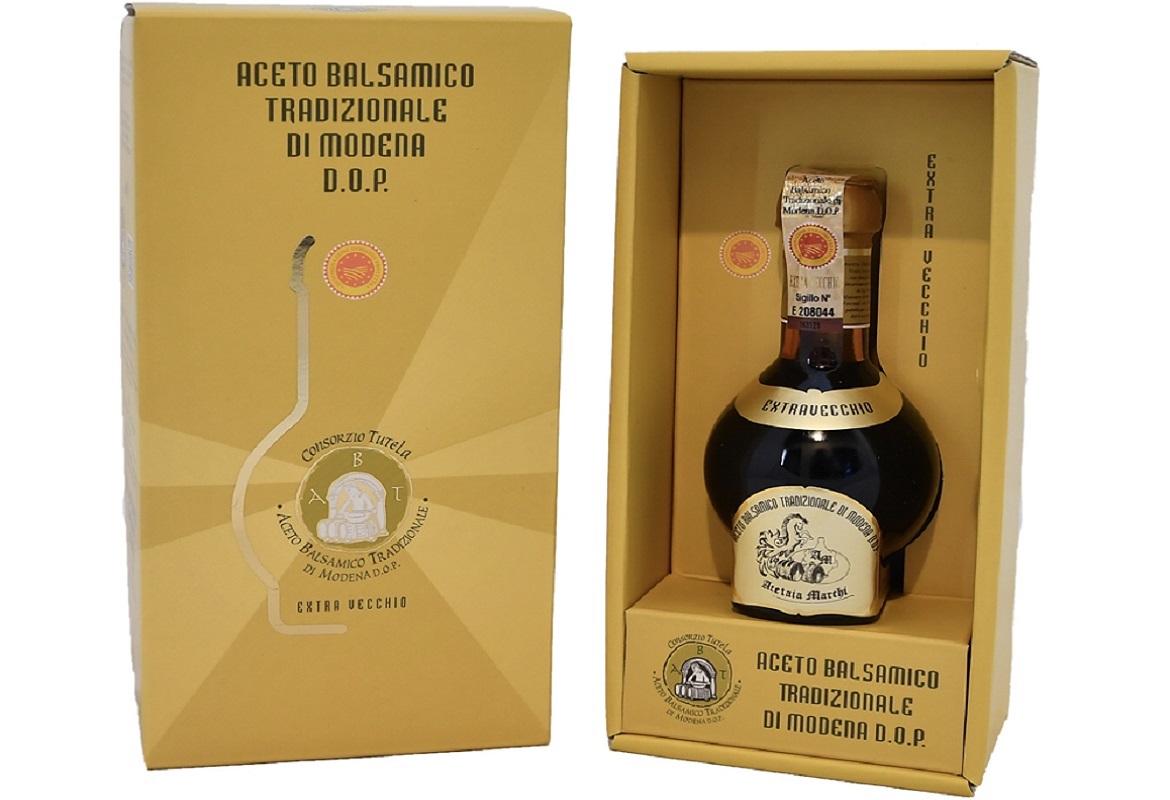 If we talk about balsamic vinegar, it is only natural that we are talking about a city: Modena. Modena is the capital of the Este family, where we find the word 'balsamic' for the first time in 1747. The wording was used to distinguish that particular category of product from others already present in the cellars of the Palazzo Ducale in Modena.
If we talk about balsamic vinegar, it is only natural that we are talking about a city: Modena. Modena is the capital of the Este family, where we find the word 'balsamic' for the first time in 1747. The wording was used to distinguish that particular category of product from others already present in the cellars of the Palazzo Ducale in Modena.
By the end of the 19th century, balsamic vinegar was already a renowned and esteemed product throughout Italy, not only for its quality and taste. Today, it is the star of numerous trade fairs all over the world and collects important awards year after year.
Traditional Balsamic Vinegar of Modena P.D.O. and Balsamic Vinegar of Modena P.G.I.
D.O.P. Traditional Balsamic Vinegar of Modena and P.G.I. Balsamic Vinegar are products backed by certifications that guarantee their quality and authenticity. However, they must be known by their distinct characteristics. In fact, there is more than one substantial difference between these two products.
The first is the result of a process that involves numerous phases and processes. It starts with cooking the grape must, at a minimum temperature of eighty degrees, and then moves on to fermentation. The Traditional Balsamic Vinegar of Modena P.D.O. is left to age for a minimum of 12 years, which becomes 25 years if the label "Extra Old" is required. During this period, the vinegar is decanted into fine wooden barrels that give rise to unfailing and unmistakable organoleptic characteristics.
If, on the other hand, we speak of Balsamic Vinegar of Modena I.G.P. we are referring to a typical product of our territory prepared with a mixture of cooked grape must and wine vinegar. The ageing and refinement process is considerably reduced compared to that of the traditional D.O.P. In fact, the minimum period of time required by the relative regulations is 60 days and the maximum is 2 years.
 What do these differences mean?
What do these differences mean?
Both products comply with the strict specifications that govern their production and end result. For example, the grapes used must be harvested exclusively in the hills of Modena and its province, and also in the province of Reggio Emilia for Balsamic Vinegar of Modena I.G.P. The vines used are Lambrusco, Ancellotta, Trebbiano, Sauvignon, Sgavetta, Berzemino and other DOC vines from the province of Modena. The colour is also strictly controlled to ensure that it is the right shade of intense brown.
Despite these details in common, it is clear that the differences in terms of ingredients and ageing result in two products with different tastes and textures. Indeed, Traditional Balsamic Vinegar of Modena P.D.O. has a more intense and pronounced flavour and consistency than Traditional Balsamic Vinegar of Modena P.D.O. and the aroma of Traditional Balsamic Vinegar of Modena P.D.O. is also more pronounced than that of Traditional Balsamic Vinegar of Modena P.D.O..
The level and perception of acidity is also very different in the two products. This smell is more pronounced and present in Balsamic Vinegar of Modena PGI, where the minimum percentage must always be greater than 6%, while it is lower in Traditional Vinegar of Modena PDO, where it blends and attenuates better over a long period of ageing.
We can therefore say with certainty that there are differences between the two products. With this in mind, we invite you to taste our balsamic vinegar. Do you prefer the traditional P.D.O. or the P.G.I. balsamic? Let us know!
What are balsamic condiments?
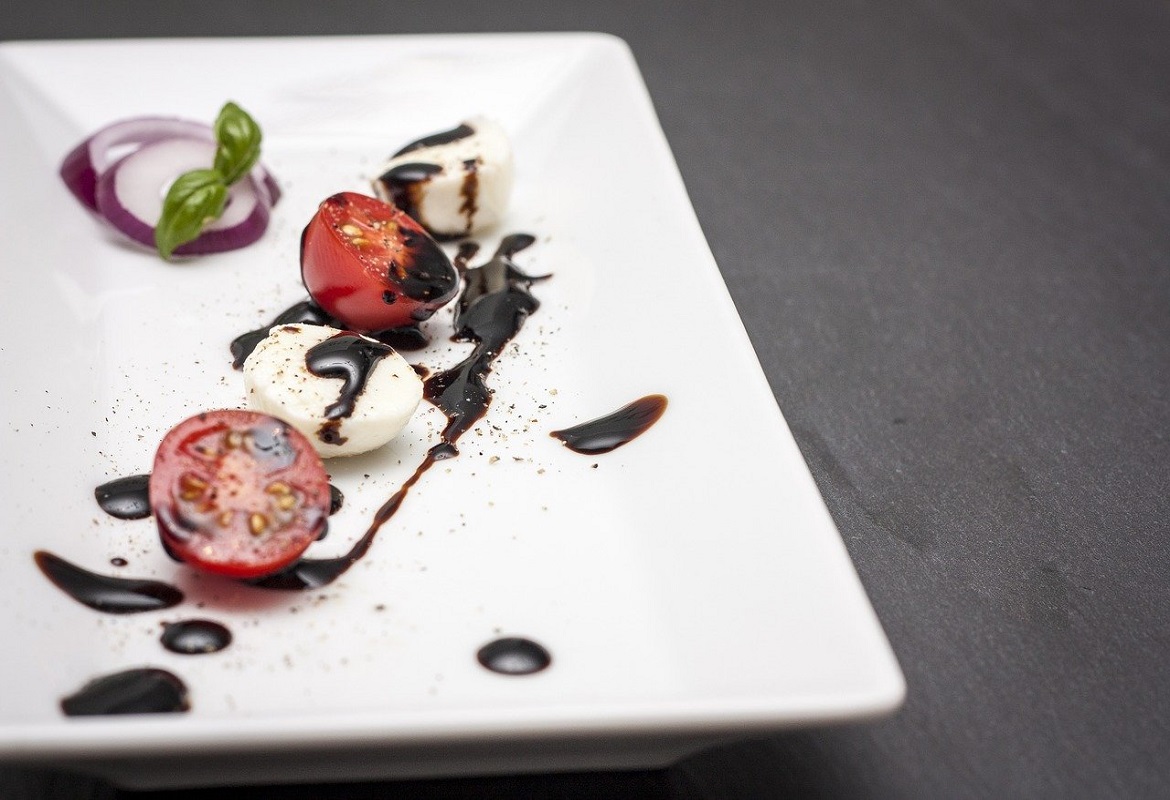
Balsamic condiments are products made by mixing concentrated grape must with quality wine vinegar. Just as with classic balsamic vinegar, the product is matured in special wooden barrels. This allows the fermentation process of the vinegar to be completed and leads to the food acquiring the typical aroma and flavour of the balsamic dressing. Let's get to know the various balsamic dressings by mentioning their different characteristics.
The differences between condiments and balsamic vinegar
You may have wondered what the difference is between balsamic vinegar and balsamic condiments. This may be mainly because the ingredients and the production process are very similar to those used for the preparation of Balsamic Vinegar of Modena P.G.I. Traditional P.G.I. vinegar, on the other hand, is produced using only cooked must.
The condiments are distinguished by their density and consistency. Among other things, they are not governed by specifications like traditional D.O.P. and Balsamic I.G.P. and do not have to undergo specific ageing procedures. The choice of bottling is also reserved to the producer, who may use any type of container.
Balsamic vinegar can only be marketed after a certain period of ageing. For the traditional PDO, in particular, the use of additives is not permitted. Furthermore, the product must only be bottled in 100 ml glass bottles.
Some examples of balsamic condiments
Among the various products on the market, you will find different types of balsamic condiments. Our own, i.e. those of Acetaia Marchi, are characterised by variable acidity and density. They are made from cooked grape must and wine vinegar. They are all 100% natural products and contain no preservatives, dyes, thickeners, antioxidants, sweeteners or added sulphites.
Here are some of our balsamic seasoning products
- "Il Delicato 6" is a dark brown balsamic seasoning that will win you over with its sweet and sour flavour. Very delicate and pleasant, it is recommended for daily use and ideal for seasoning various dishes.
- "La Riserva 16" is another of our prestigious balsamic dressings. It is the result of the combination of a fine cooked must and an excellent wine vinegar. It is clear black in colour and has an intense flavour with fruity notes. It is perfect to enhance your risottos, but also prawns and fritters.
- "Prezioso 9": the name says it all about this condiment made from the best grapes. The racking in acacia barrels gives the product a special creaminess and aroma. You can use this condiment to enrich many different dishes.
- "Leggendario 26" is a product with an intense taste, matured for a long time in quality wooden barrels. It is a delight for the palate. It is one of the balsamic seasonings that you can enjoy with not too mature cheeses, on strawberries or even on a simple pudding.
- The Organic white Condiment is a unique product made from a mixture of cooked grape must and wine vinegar. With its straw-yellow hue, it boasts appreciable density and a delicate taste. For the preparation of this condiment, only white Trebbiano grapes from the region, organically grown, are chosen.
We invite you to discover all our products: our balsamic condiments are all of high quality, genuine and prepared using traditional methods. They will win you over from the first taste!


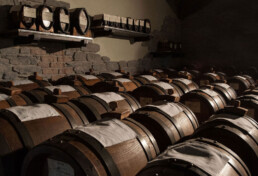

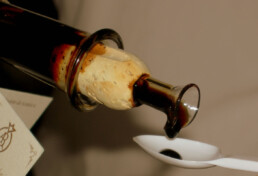
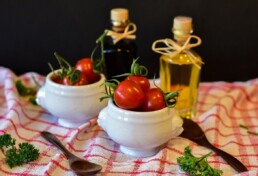
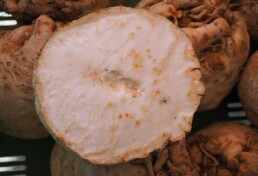




 What do these differences mean?
What do these differences mean?